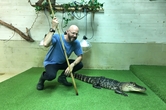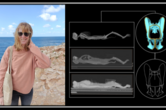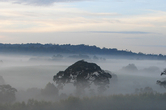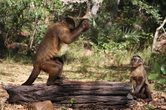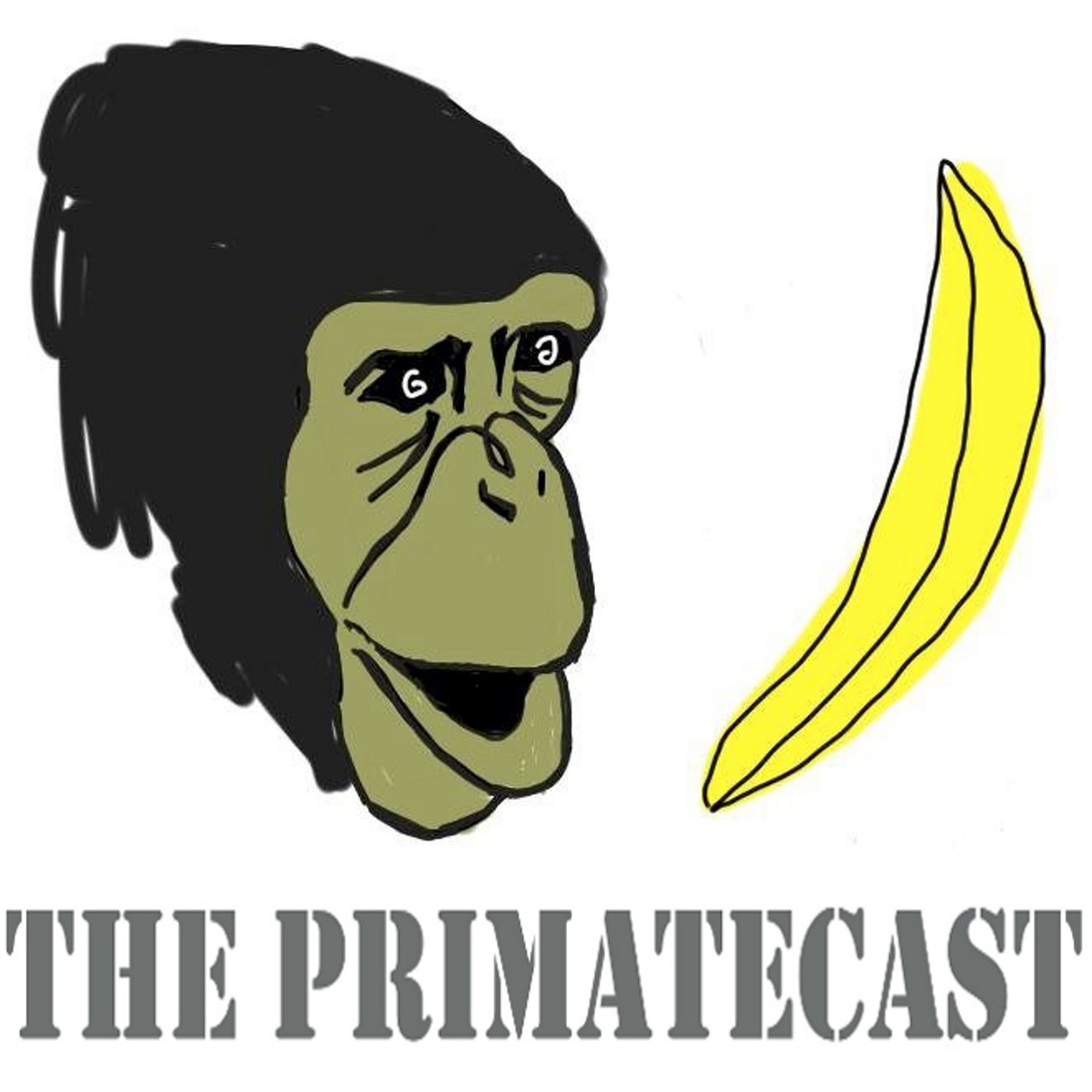Chasing parasites with molecular tools
Dr. Liesbeth Frias and her colleagues recently published an open-access paper on parasite transmission among primates living on the island of Borneo. Here she tells us what it's like to search for primate fecal samples (poops!) in Bornean forests, and what we can learn about a group of parasites called nodule worms by figuring out their genetic relatedness to one another.
CICASP: Why is it important to study parasites in non-human primates?
Frias: More than half of the existing infectious diseases in humans are transmitted between animals and humans, and most of the emerging infectious diseases affecting humans (such as Ebola, Influenza and HIV) have an animal origin. As we alter ecosystems around the world, we also alter natural parasite transmission dynamics. This can have unpredicted consequences with significant implications for infectious disease transmission. For example, deforestation and land conversion to agricultural land brings wildlife and humans into close contact. Deforestation is also largely happening across non-human primate habitats, and because humans and non-human primates are so closely related, we are very likely to be susceptible to the same parasites.
CICASP: Why Borneo?
Frias: Borneo is an island of outstanding biological diversity. It has one of the oldest rainforests in the world, and it is the center of evolution and radiation of many endemic species. I conducted my fieldwork in the northern tip of Borneo, in a place called the Lower Kinabatangan Wildlife Sanctuary (LKWS). This sanctuary runs in patches along the Kinabatangan River, and it is surrounded by extensive areas of commercial oil palm. Although the LKWS has been deeply threatened with habitat destruction, it is still a stronghold for many of Borneo’s large mammals, including several primate species that can only be found in Borneo, such as the Bornean gibbon, the Bornean orangutan, the red leaf monkey and the charismatic proboscis monkey. This rich community of primates allowed me to explore differences in parasite occurrence and distribution in primate species with markedly different life histories.
CICASP: Can you describe what nodule worms look like?
Frias: The name “nodule worm” is a bit misleading, because it’s referring not to the parasite but to the clinical manifestation of the disease it causes in humans, where larvae (= immature worms) migrate to the intestine walls forming “nodules”. Parasite eggs (Fig. 1A) are oval and relatively big when compared to other parasite groups. These are passed to the environment in feces, where infectious larvae hatch. Larvae have a protective layer that looks like a wavy ridge along the body (Fig. 1B), and that allows them to survive for longer in dry conditions. The most characteristic feature of adults (Fig. 1C) is a distinctive digestive tract, which gives the group of parasites its name, Oesophagostomum (oesophagos=oesophagus; stoma=mouth).
Fig. 1. A: Oesophagostomum egg (Frias et al., unpublished data), B: infective larva (Yevstafieva et al. 2017, Vestnik zoologii), and C: adult worm (photo credit: Prof. Hideo Hasegawa, Oita University).
CICASP: How do these parasites affect their host primates?
Frias: Apes in captivity show symptoms observed in a large number of severe human cases, such as weakness, abdominal pain, vomiting, diarrhea and weight loss. Many complications of the disease can lead to their death, same as in humans. In the wild, symptoms associated with the disease have been observed in chimpanzees and baboons. In fact, when Prof. Mike Huffman was conducting his research in Mahale, he observed chimpanzees swallowing whole leaves to purge intestinal worms. But in general, although nodule worm seems to have the potential to infect most (if not all) primate species, we know very little about its effects on primate hosts.
CICASP: How are nodule worms transmitted among hosts? Can humans get them?
Frias: Nodule worms have direct life cycles, which means that infection happens by direct contact with the parasite. Infected hosts eliminate parasite eggs with feces into the environment, and once out of the host, infective larvae hatch from eggs. This is when a host can get infected, and humans can absolutely get infected! In fact, the first nodule worm (Oesophagostomum bifurcum) was reported at high prevalence in humans living in Togo and Ghana (West Africa). And because researchers also found the parasite in nonhuman primates living in proximity to these areas, they started thinking that humans were getting the infection from these wild primates. Later on—and only by using molecular tools—they realized that humans and wild primates carried different strains of this particular nodule worm. Another species of nodule worm (O. stephanostomum) sometimes infects both humans and wild primates living in proximity, but not always. This suggests that there may be several strains within this species with differential capacities to infect humans.
CICASP: What do the genetic data tell us about this particular nodule worm (Oesophagostomum aculeatum)?
Frias: First, it tells us about the species of nodule worm infecting these primates, and second, by looking at the genetic structure of parasites, it tells us how the parasites are distributed among hosts. You see, we observed the “same” parasite infecting four primate species living in proximity. But parasites that look the same are not necessarily the same genetically. We wanted to know if this community of primates was infected by a single strain of nodule worm, or whether different strains infected different primate species.
We observed that O. aculeatum doesn't seem to have barriers for transmission among primate species in this area. Since there is extensive habitat overlap in this area for these four primate species, it is possible that host movements may be contributing to a high transmission potential with no barriers for transmission among different primate species. We did not include human populations in this research, but these results raise a red flag for neighboring villages and surrounding plantations, as this species of nodule worm could have a zoonotic potential in the same way the other species do.
CICASP: What was the most challenging aspect of this research?
Frias: Right after I started my PhD, piracy threats to the east coast of Sabah resulted in travel advisory against that area, which severely limited access to the field site. We managed to sort that out eventually, but then we struggled sending most of our collected samples to Japan. I learned then that in order to successfully conduct long-term research abroad, it is fundamental to make connections early on and strengthen them over time.
CICASP: Parasites going extinct sounds like good news for the hosts. Can 'bad' things happen when some parasites go extinct? Are there 'good' parasites?
Frias: From an anthropocentric perspective, any parasite that threatens our species’ survival or that of our animal production systems instantly becomes a “bad” parasite. But from an ecological perspective, there are no “good” or “bad” parasites. Parasites are natural components of ecosystems; they regulate populations and make up for a large fraction of biological diversity. In some cases, the presence of certain parasites has detrimental effects on individual hosts, but ultimately benefit the rest of the host population. For example, red grouse populations in the UK are naturally regulated by the presence of a parasite inducing low host fecundity and mortality. In the absence of parasites, grouse could rapidly run out of resources and go locally extinct. Host-parasite dynamics stabilize once the grouse population goes back to numbers that are more sustainable for its ecosystem.
Other parasites specialize in a single host species, being more susceptible to extinction events and to go extinct if their host does. For example, primates threatened with extinction not only have less parasite species, but we have observed that, in threatened hosts, specialist parasites are less abundant than parasites infecting several host species. This is an important observation, as generalist parasites are often associated with disease transmission in wildlife. Our observations suggest that specialist parasites may be regulating the over-expansion of generalist parasites within hosts, and that by losing them, hosts may become more susceptible to disease-causing parasites.
CICASP: What is it like to collect fecal samples in the field?
Frias: On my first visit to the Kinabatangan, I was thrilled to go into the forest and collect fecal samples from wild primates, and very overwhelmed after the first day out. In order to find primates in their sleeping sites, we would start very early every day, get on the boat, and drive along the Kinabatangan River. Mornings and late afternoons are great to spot wildlife, so beside primates we would be able to see crocodiles, hornbills and, occasionally, bearded pigs. Once we had spotted our group of primates, we would approach their tree and look around for feces. But, as it turned out, I was terrible at spotting primates on trees, and what I had read about primates did not help me identifying them in the wild.
Finding feces in the forest was not as straightforward as it sounded either. Dense vegetation makes it difficult to see the ground, let alone find feces, and sometimes I would spend more time stuck in mud than actually looking for feces. And mosquitoes… (sigh), mosquitoes were pure evil! Eventually things got better. Prof. Andrew MacIntosh (my supervisor) still had the fastest eyes in the boat, but at least now I could recognize primates. In the forest, I learned to use my other senses to conduct more successful “poop hunts”, sniffing for fresh samples, and listening to flies and dung beetles that would lead me to feces. And mosquitoes? They still are (and probably always will be) pure evil.
CICASP: Where does this research take you next?
Frias: Back to Borneo! My past research focused on parasites of primates living in a human-modified landscape. For me, the next step is to understand what happens at the border between the forest and oil palm plantations, and how these transitional areas may affect parasite transmission dynamics. For this, we are investigating the potential of leopard cats as sentinels to assess the effects of human disturbance on the health of Bornean wild cats.
Most wild cats in Borneo, such as clouded leopards, flat-headed cats and marbled cats, are very difficult to study, because they are few and they are very cryptic. Leopard cats, on the other hand, are not only abundant, but they are well adapted to disturbed habitats, such as oil palm plantations. As people living in plantations often bring their domestic dogs and cats with them, we would like to know if these domestic animals act as a source of infection to vulnerable cat species. And because leopard cats frequent both forest and plantations, we hope that by targeting leopard cats as a model species, we will be able to better understand disease transmission in these areas where wildlife and humans co-exist.
